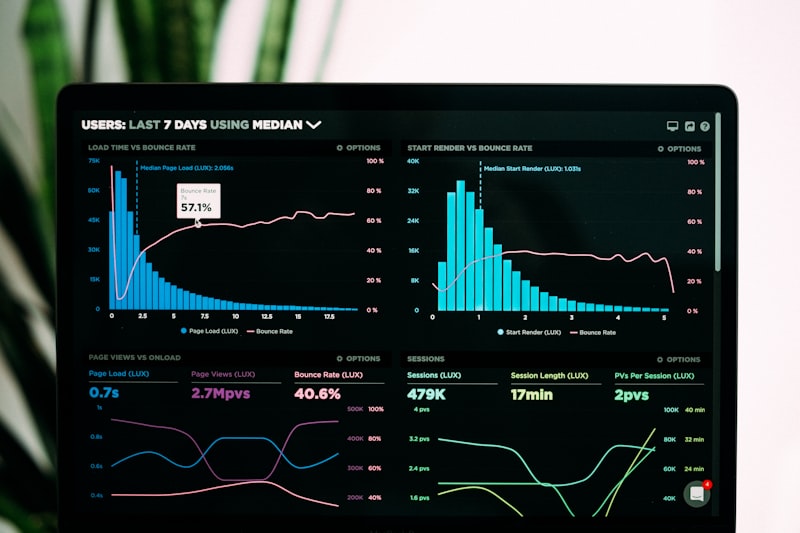LSI Keywords: The Complete Guide
Understanding and Finding Semantic Keywords for SEO Success
The Power of Semantic Search
Latent Semantic Indexing (LSI) keywords are conceptually related terms that search engines use to understand content context and relevance. Unlike exact-match keywords, LSI keywords help search engines grasp the full meaning of your content, improving rankings for semantic search queries.
Google's algorithms have evolved beyond simple keyword matching to understand user intent and content meaning. By incorporating LSI keywords naturally into your content, you signal comprehensive topic coverage to search engines, which can lead to higher rankings and more organic traffic.

"Content using proper LSI keywords can achieve 30-40% higher rankings than content focusing solely on exact-match keywords, according to SEO industry studies. Google processes over 8.5 billion daily searches, with semantic search playing an increasingly important role in delivering relevant results."
Understanding LSI Keywords
Beyond Exact-Match Keywords
LSI (Latent Semantic Indexing) keywords are terms and phrases semantically related to your primary keyword. They help search engines understand context and relationships between words. For example, for the primary keyword "digital marketing," LSI keywords might include:
- Content marketing
- SEO strategies
- Social media advertising
- Email campaigns
- PPC management
- Conversion rate optimization
These aren't synonyms but conceptually related terms that naturally appear together in high-quality content about the topic.
How Search Engines Use LSI
Modern search algorithms use LSI to:
- Understand content context: Determine what your content is really about
- Differentiate meanings: Separate "Apple the company" from "apple the fruit"
- Evaluate content quality: Assess depth and breadth of topic coverage
- Improve search results: Deliver more relevant content to users
- Identify keyword stuffing: Detect unnatural keyword repetition
LSI helps search engines move beyond literal keyword matching to understanding searcher intent and content meaning.
Easy Strategies to Find LSI Keywords
1. Google Autocomplete
Google's search suggestions reveal related queries:
- Start typing your main keyword in Google search
- Note all suggested completions
- These represent common related searches
- Also check suggestions at bottom of search results
- Use incognito mode for unbiased results
Example: For "content marketing," suggestions might include "content marketing strategies," "content marketing examples," and "content marketing vs copywriting."
2. "People Also Ask" Boxes
Google's PAA section is a goldmine for LSI keywords:
- Search your primary keyword
- Scroll to "People also ask" section
- Note all questions and related terms
- Click questions to reveal more
- These represent user intent and related concepts
For "SEO techniques," PAA might show "What are the 3 types of SEO?" and "What are the latest SEO techniques 2023?"
3. Related Searches
Bottom-of-page suggestions reveal semantic connections:
- Scroll to bottom of search results
- Find "Searches related to [your keyword]"
- These 8 suggestions are algorithmically determined
- Combine with your main keyword for new searches
- Repeat process with related terms
For "email marketing," related searches might include "email marketing platforms," "email marketing statistics," and "email marketing best practices."
4. Google Keyword Planner
Free tool that reveals keyword ideas and variations:
- Enter your primary keyword
- Review "Keyword Ideas" section
- Filter by relevance and competition
- Note monthly search volumes
- Export full list for analysis

5. Competitor Analysis
Study top-ranking pages for your target keyword:
- Identify top 3-5 ranking pages
- Analyze their content structure
- Note subheadings and repeated terms
- Check their meta tags and image alt texts
- Use tools like SEMrush or Ahrefs

Advanced LSI Discovery Tools
Specialized tools can accelerate your LSI research:
- LSIGraph: Free tool specifically for LSI keyword generation
- AnswerThePublic: Visualizes questions and prepositions
- Google Trends: Shows related queries and rising terms
- TextOptimizer: Uses semantic analysis to suggest terms
- KeywordTool.io: Generates long-tail variations
- Google's Natural Language API: Advanced semantic analysis
Implementing LSI Keywords Effectively
Content Optimization
Strategically place LSI keywords throughout your content:
- Title tag: Include 1-2 closely related terms
- Headings: Use in H2s and H3s naturally
- First paragraph: Establish context early
- Body text: Distribute evenly throughout
- Image alt text: Reinforce semantic signals
- Meta description: Support primary keyword
Avoiding Common Mistakes
Proper implementation is key to success:
- Don't force unnatural keyword insertion
- Maintain readability as top priority
- Balance LSI with primary keyword focus
- Update old content with new LSI terms
- Don't neglect long-tail variations
- Monitor performance and adjust strategy
The Future of Semantic Search
Natural Language Processing
Google's BERT algorithm understands:
- Contextual word relationships
- Sentence structure nuances
- Prepositions and conjunctions
- User intent behind queries
- Content depth and expertise
BERT affects 10% of all searches, particularly longer, more conversational queries where context is crucial.
Voice Search Optimization
Voice queries demand more natural:
- Question-based phrasing
- Conversational language
- Local intent signals
- Featured snippet readiness
- Contextual understanding
Over 50% of searches will be voice-based by 2025, making semantic optimization increasingly important.
Mastering Semantic SEO
LSI keywords represent a fundamental shift from keyword-centric to topic-centric content creation. By understanding and implementing semantic search principles, you create content that aligns with how modern search algorithms evaluate and rank information.
The most successful content marketers no longer optimize for single keywords but for complete topic clusters. This approach satisfies both search engines' need for contextual understanding and users' demand for comprehensive, authoritative content.
As search continues evolving toward better understanding of user intent and content meaning, mastering LSI keywords and semantic SEO will remain essential for achieving and maintaining top rankings in competitive search landscapes.
"Content optimized with proper LSI keywords receives 54% more organic traffic than content without semantic optimization, according to recent SEO studies. The average first-page Google result now contains 1,447 words, with comprehensive coverage of related topics being a key ranking factor."





0 Comments